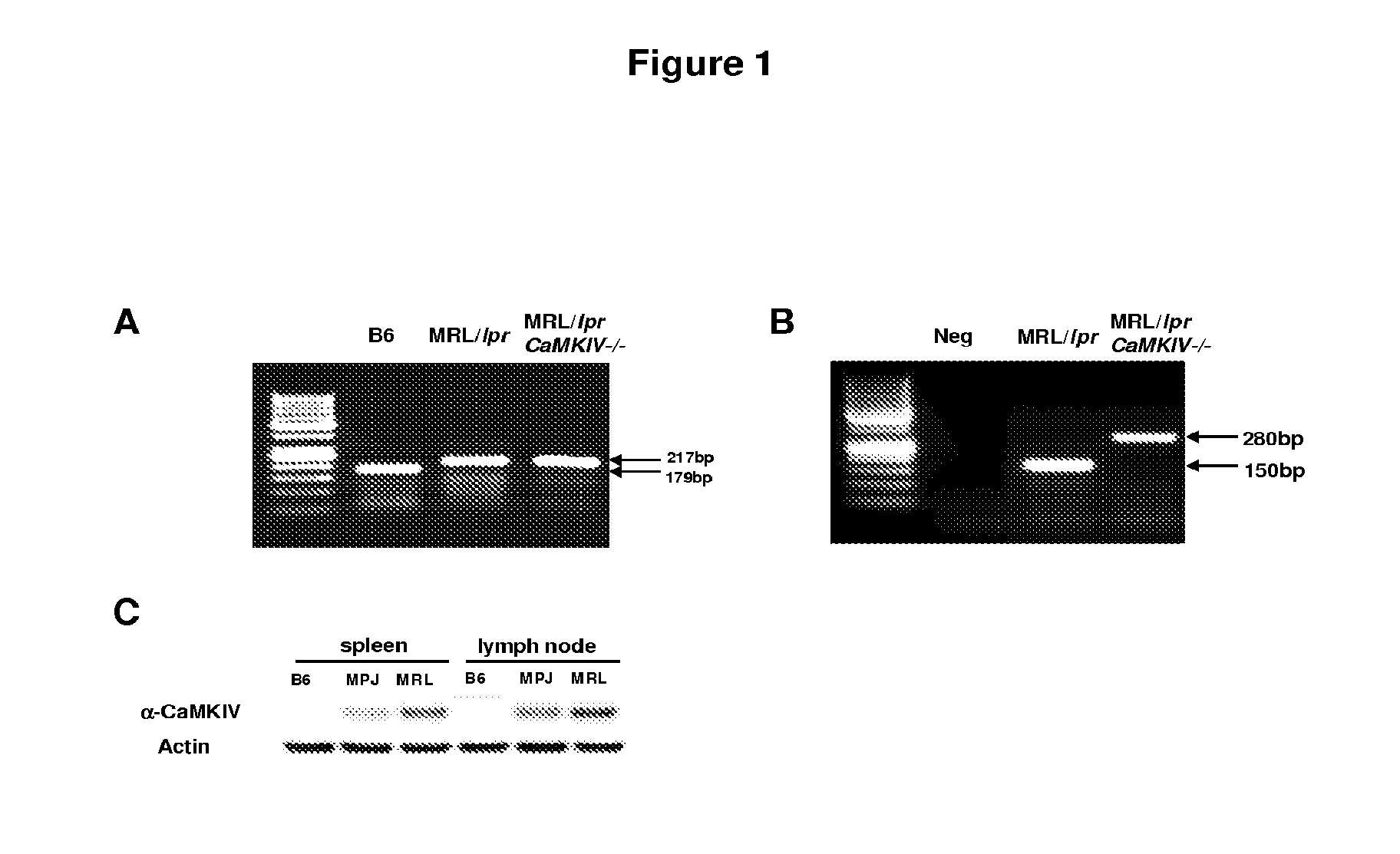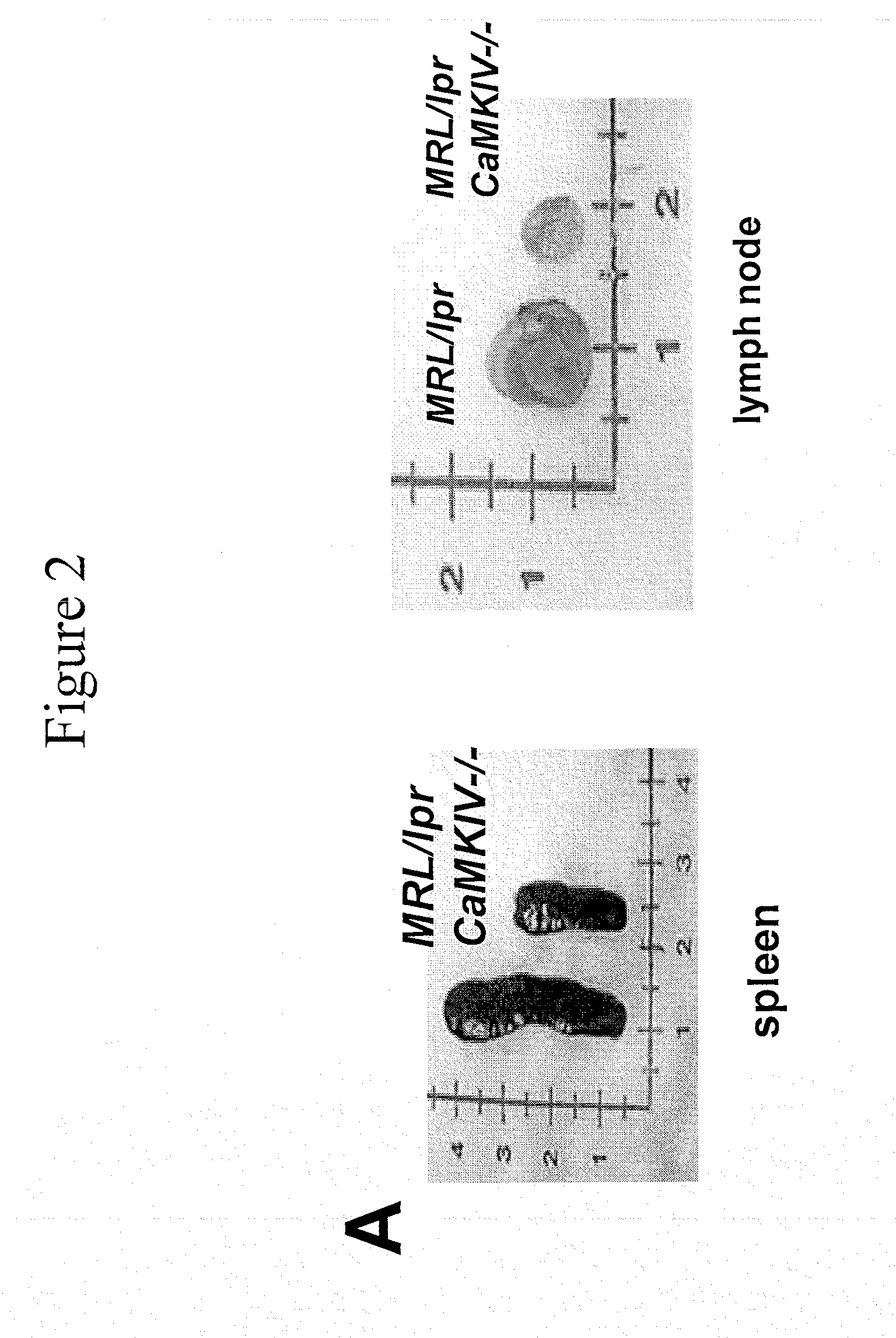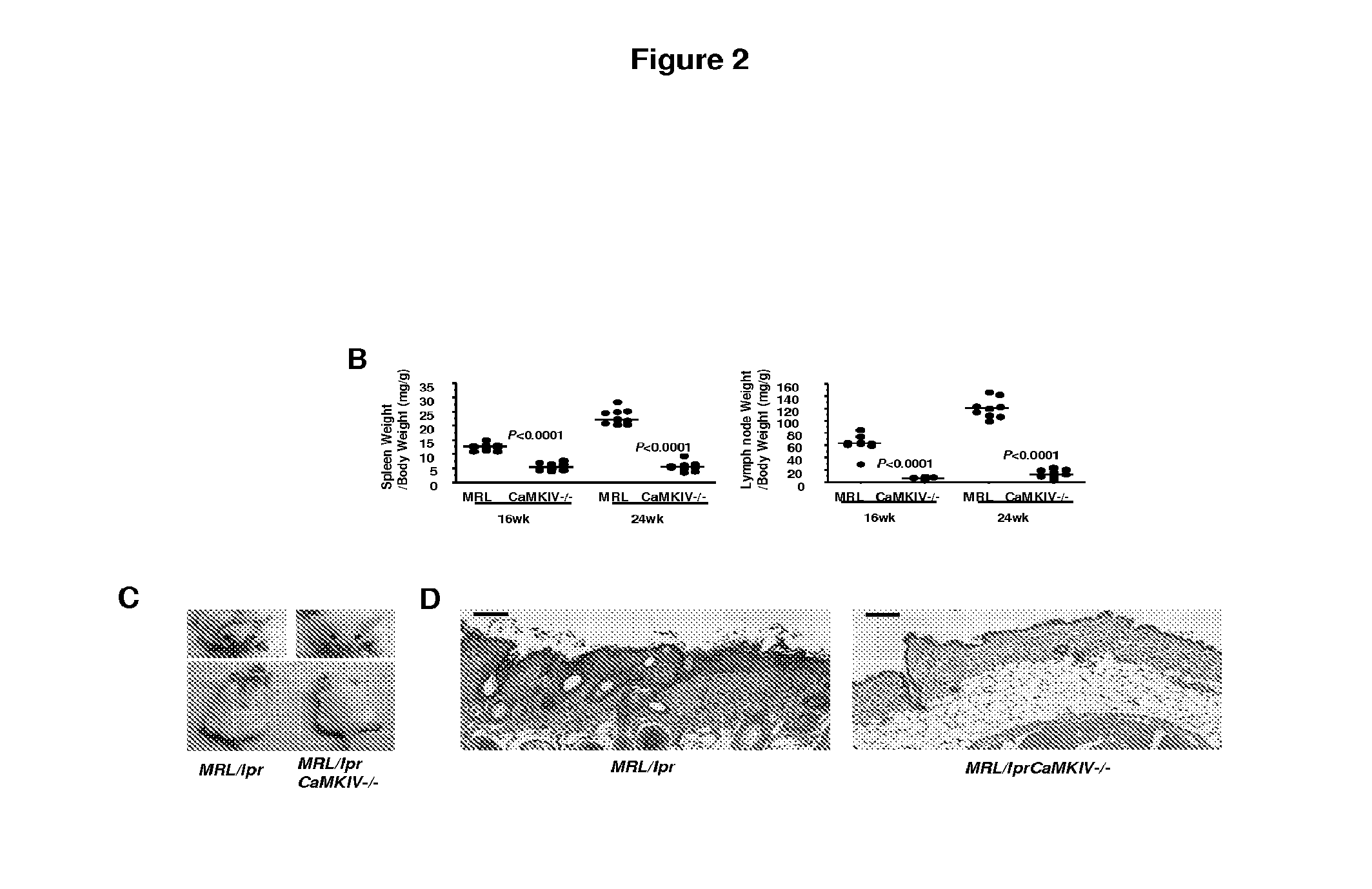Methods for treating inflammatory autoimmune disorders
a technology for autoimmune disorders and inflammatory conditions, applied in the direction of immunological disorders, drug compositions, amide active ingredients, etc., can solve the problems of inability to predict the course of the disease, inflammation and tissue damage, etc., to reduce the likelihood of developing, and reduce the effect of biological activity
- Summary
- Abstract
- Description
- Claims
- Application Information
AI Technical Summary
Benefits of technology
Problems solved by technology
Method used
Image
Examples
example 1
Generation of CaMKIV-Deficient MRL / lpr Mice
[0112]CaMKIV-deficient mice have been reported to display defects in positive selection in the thymus with a block in the generation of single positive T cells, but they do not manifest any obvious immune disease (Raman et al., J Immunol. 167: 6270-6278, 2001). CaMKIV-deficient mice have been derived by targeted disruption of exon III of the CaMKIV gene (Ho et al., J Neurosci. 20: 6459-6472, 2000). Here, MRL / lprCaMKIV− / − mice were generated (F6-F8) on a mixed MRL / lpr background and studied through the 6th month of age. All mice described herein were purchased from The Jackson Laboratory and maintained in a SPF animal facility, and all experiments were approved by the Institutional Animal Care Committee of Beth Israel Deaconess Medical Center. Genotyping PCR for wild-type Fas (179 bp) and lpr mutation (217 bp) alleles in C57B6 / L, MRL / lpr and MRL / lprCaMKIV− / − mice is shown (FIG. 1A). Wild-type (WT) (150 bp) and CaMKIV-null (280 bp) alleles we...
example 2
CaMKIV is Overexpressed in Lymphoid Organs of MRL / Lpr Mice and CaMKIV Deficiency Suppresses Disease Expression in MRL / Lpr Mice
[0113]Spleen and lymph node were homogenized in radioimmunoprecipitation assay (RIPA) buffer at 4° C. After centrifugation at 14,000 rpm for 30 minutes at 4° C., supernatant was collected and stored at −80° C. until use. The following antibodies were used for the immunoblot assay: mouse anti-CaMKIV (BD Biosciences) and rabbit anti-actin (Sigma).
[0114]CaMKIV expression was significantly higher in spleen and lymph node extracts from MRL / lpr mice compared to C57BL / 6 and MRL / MPJ mice (FIG. 1C). In addition, CaMKIV expression was higher in MRL / MPJ than in C57BL / 6 mice.
[0115]At 24 weeks of age, spleen and lymph node size (expressed as organ / body weight ratio) (FIGS. 2A and 2B) in the MRL / lprCaMKIV− / − mice compared to MRL / lpr mice were significantly reduced.
[0116]Other organs, including the kidneys, were smaller in the CaMKIV-deficient mice. We evaluated the kidney ...
example 3
CaMKIV Deficiency Improves Lupus Nephritis
[0117]The severity of nephritis was evaluated in a blinded manner by histological examination of the kidney sections. The kidneys of the mice were removed, fixed in 10% buffered formalin, and embedded in paraffin. Sections (5-μm) were stained with Hematoxylin-Eosin (HE) for light microscopic observation. We evaluated separately glomerular, tubular and perivascular areas, and the presence of glomerular crescents in order to obtain accurate measurements of the disease using a previously described scoring system (Kikawada et al., J Immunol. 170: 3915-3925, 2003 and Sadanaga et al., Arthritis Rheum. 56: 1618-1628, 2007). Glomerular lesions and tubular and perivascular infiltrates were significantly decreased in MRL / lprCaMKIV− / − compared to MRL / lpr mice. Representative sections are shown in FIG. 3A, and cumulative data are shown in FIG. 3B. In FIG. 3B, all values are expressed as mean+SD. A Kruskal-Wallis test with post-hoc comparisons using the ...
PUM
| Property | Measurement | Unit |
|---|---|---|
| Biological properties | aaaaa | aaaaa |
| Therapeutic | aaaaa | aaaaa |
Abstract
Description
Claims
Application Information
 Login to View More
Login to View More - R&D
- Intellectual Property
- Life Sciences
- Materials
- Tech Scout
- Unparalleled Data Quality
- Higher Quality Content
- 60% Fewer Hallucinations
Browse by: Latest US Patents, China's latest patents, Technical Efficacy Thesaurus, Application Domain, Technology Topic, Popular Technical Reports.
© 2025 PatSnap. All rights reserved.Legal|Privacy policy|Modern Slavery Act Transparency Statement|Sitemap|About US| Contact US: help@patsnap.com



